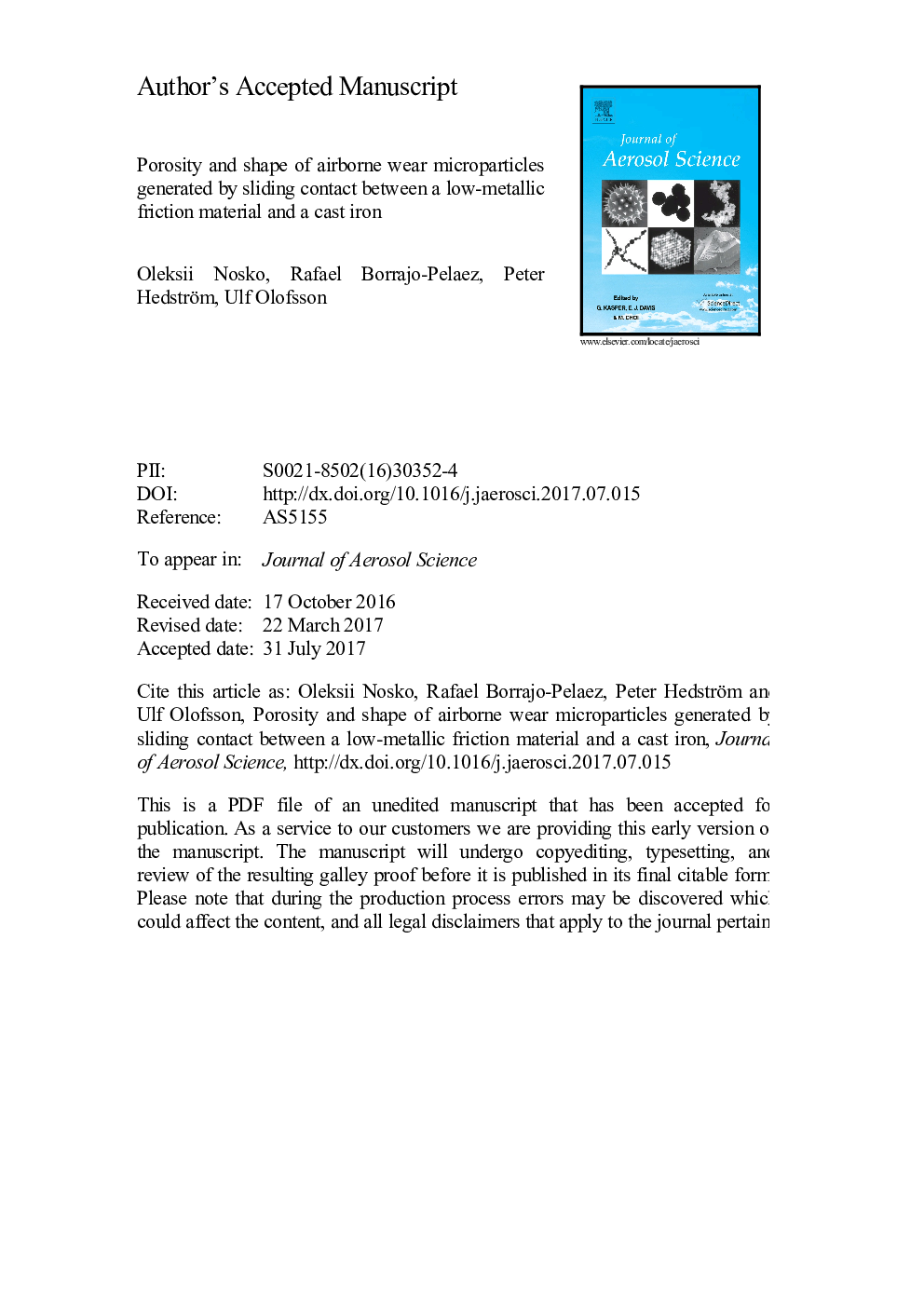| Article ID | Journal | Published Year | Pages | File Type |
|---|---|---|---|---|
| 5753914 | Journal of Aerosol Science | 2017 | 24 Pages |
Abstract
The wear of brakes in transport vehicles is one of the main anthropogenic sources of airborne particulate matter in urban environments. The present study deals with the characterisation of airborne wear microparticles from a low-metallic friction material / cast iron pair used in car brakes. Particles were generated by a pin-on-disc machine in a sealed chamber at sliding velocity of 1.3 m/s and contact pressure of 1.5 MPa. They were collected on filters in an electrical low pressure impactor, and an investigation was conducted to quantify their shape and porosity. Scanning electron microscopy revealed that most of the 0.1â0.9 µm particles are flakes and have a breadth-to-length aspect ratio of 0.7 ± 0.2. Particle porosity was determined by milling particles with a focused ion beam and subsequent analysis of the exposed particle cross-sections. Most of the 0.3-6.2 µm particles were revealed to have porosity of 9 ± 6%. Analysis of the relationship between effective particle density, particle material density, dynamic shape factor and porosity showed that the shape factor has a stronger influence on the effective density of airborne wear particles than the porosity factor. The obtained results are useful for accurate prediction of particle behaviour in the atmosphere and in the human respiratory system.
Related Topics
Physical Sciences and Engineering
Earth and Planetary Sciences
Atmospheric Science
Authors
Oleksii Nosko, Rafael Borrajo-Pelaez, Peter Hedström, Ulf Olofsson,
